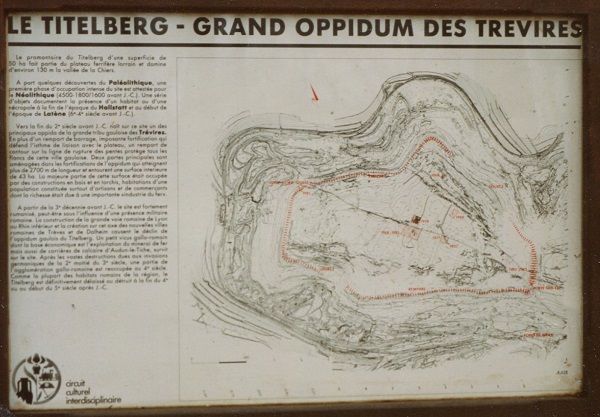 Remains of the wall which once surrounded the whole of the Titelberg;
Credit: David Heal
Remains of the wall which once surrounded the whole of the Titelberg;
Credit: David Heal
Chronicle.lu has teamed up with local author and tour guide David Heal of Luxembourg Battles for a historical series.
Based on David Heal's extensive research spanning several decades (and documented in the form of place-name index cards), the series aims to present interesting local historical events and facts linked to places in (and around) Luxembourg.
Next up is a look at the history of Titelberg, one place in Luxembourg that is well known across the world - at least among archaeologists.
It lies above Pétange and is a very large Gallo-Roman fortified camp, or in this case, it is big enough to qualify as a town. It has a long history even before the arrival of the Romans - dating to Celtic times. David noted that space does not permit to give readers the history or the modifications to the fortifications over the years. He suggests that before going there, one should visit the National Museum at the Fish Market (Nationalmusée um Fëschmaart). Whilst this is, according to David, a spectacular visit in its own right, he noted that down in the basement, one will find information panels showing how the fortifications (walls) changed over time as the builders became more sophisticated.
Visitors can drive a lot of the way up if they want, but David advised a decent map would be needed, as it is not obvious. Alternatively, one can walk up to it. Just walking across it once there will give one some decent exercise.
Today, a large part of the camp or town is farmland, but there are one or two areas where excavations take place from time to time. One area is used by an American university according to a notice, but David noted that in 50 years I had never seen anyone there.
There are the remains of a couple of villas and bath houses to be seen. Such "Gallo-Roman" remains are to be found in many places in Luxembourg.
This camp is far bigger than most others. There is one near Bitburg – Otzenhausen – in Germany, which David said would fit twice into the Titelberg, and the famous Maiden Castle in Dorset, England would fit in one end of the Titelberg site. The walls were not necessarily made to keep out the Romans, he added. It was a very rough area around these parts until the Romans took over, and even after they left. The walls were meant to keep out marauding gangs and others, so there were no pitched battles here as there were in, say, Maiden Castle, David concluded.









